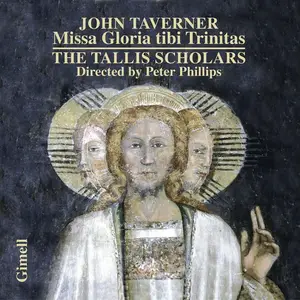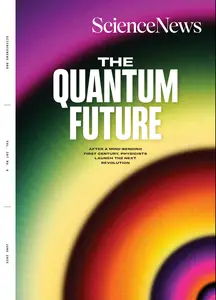| Su | Mo | Tu | We | Th | Fr | Sa |
|---|---|---|---|---|---|---|
| 27 | 28 | 29 | 30 | 1 | 2 | 3 |
| 4 | 5 | 6 | 7 | 8 | 9 | 10 |
| 11 | 12 | 13 | 14 | 15 | 16 | 17 |
| 18 | 19 | 20 | 21 | 22 | 23 | 24 |
| 25 | 26 | 27 | 28 | 29 | 30 | 31 |
Attention❗ To save your time, in order to download anything on this site, you must be registered 👉 HERE. If you do not have a registration yet, it is better to do it right away. ✌

SpicyMags.xyz

SpicyMags.xyz
Surrogates (2009)
Date: 25 May 2025 22:00:30
1080p (FullHD) / BDRip
IMDb
Set in a futuristic world where humans live in isolation and interact through surrogate robots, a cop is forced to leave his home for the first time in years in order to investigate the murders of others' surrogates.
Mashin Souzouden Wataru S01E20
Date: 25 May 2025 21:57:26
Mashin Souzouden Wataru S01E20
WEB-DL | MKV | 1920x1080 | 日本語 | H264 @ 8155 kbps | E-AC-3 @ 224.0 kbps | 23 min 50 s | 1.40 GiB
WEB-DL | MKV | 1920x1080 | 日本語 | H264 @ 8155 kbps | E-AC-3 @ 224.0 kbps | 23 min 50 s | 1.40 GiB
NG Explorer - Search for the Head of John the Baptist (2012)
Date: 25 May 2025 21:50:25
1080p (FullHD) / WEB-DL
NG Explorer - Search for the Head of John the Baptist (2012)
WEB-DL 1080p | 45mn | 1920x1080 | MKV AVC@3700Kbps | AC3@256Kbps 6CH | 1.3 GiB
Language: English | Genre: Documentary | Subs: English
WEB-DL 1080p | 45mn | 1920x1080 | MKV AVC@3700Kbps | AC3@256Kbps 6CH | 1.3 GiB
Language: English | Genre: Documentary | Subs: English
Over the centuries, the head of John the Baptist has ranked high on the list of the most sought-after relics in Christianity. The Jewish preacher and prophet, celebrated as one of the earliest Christian saints, is believed to have paved the way for his distant cousin, Jesus, whom John famously baptized in the Jordan River.
Witch Watch - S01E08
Date: 25 May 2025 21:42:41
Witch Watch - S01E08
MKV | 1920x1080 | 日本語 | H265 @ 2072 kbps | AAC @ 127.999 kbps | 24 min 13 s | 385 MiB
Subtitles: العربية, Português, English, Español, Français, Deutsch, Italiano, Русский
MKV | 1920x1080 | 日本語 | H265 @ 2072 kbps | AAC @ 127.999 kbps | 24 min 13 s | 385 MiB
Subtitles: العربية, Português, English, Español, Français, Deutsch, Italiano, Русский
4K Heritage TV - Ivangorod Fortress, Russia (2020)
Date: 25 May 2025 21:37:47
1080p (FullHD) / WEB-DL
4K Heritage TV - Ivangorod Fortress, Russia (2020)
WEB-DL 1080p | 52mn | 1920x1080 | MKV AVC@3256Kbps | AC3@320Kbps 2CH | 1.3 GiB
Language: English | Genre: Documentary | Subs: English
WEB-DL 1080p | 52mn | 1920x1080 | MKV AVC@3256Kbps | AC3@320Kbps 2CH | 1.3 GiB
Language: English | Genre: Documentary | Subs: English
The castle of Ivangorod, named after the 'Grand Prince of Moscow' Ivan III of Russia is a medieval fortress built for battle. The castle stands high above the Navrona River on a bluff opposite the Estonian City, Narva.
Witch Watch - 08
Date: 25 May 2025 21:28:39
Witch Watch - 08
MKV | 1920x1080 | 日本語 | H265 @ 7972 kbps | AAC @ 127.999 kbps | 24 min 12 s | 363 MiB
Subtitles: English
MKV | 1920x1080 | 日本語 | H265 @ 7972 kbps | AAC @ 127.999 kbps | 24 min 12 s | 363 MiB
Subtitles: English
Peter Phillips, The Tallis Scholars - John Taverner: Missa Gloria tibi Trinitas (2013)
Date: 25 May 2025 21:21:19
Peter Phillips, The Tallis Scholars - John Taverner: Missa Gloria tibi Trinitas (2013)
EAC | FLAC | Image (Cue & Log) ~ 326 Mb | Total time: 79:03 | Scans included
Classical | Label: Gimell | # CDGIM045 | Recorded: 2013
EAC | FLAC | Image (Cue & Log) ~ 326 Mb | Total time: 79:03 | Scans included
Classical | Label: Gimell | # CDGIM045 | Recorded: 2013
"I chose to celebrate our 40th anniversary with Taverner’s Missa Gloria tibi Trinitas because I believe it to be one of the greatest compositions ever to have been written in England—a perfect ambassador for the repertoire we have made our own. It is also spectacularly difficult to sing, requiring a very high degree of expertise from its performers. I felt there was no better piece to show-case what The Tallis Scholars have achieved in their 40 years of dedication to polyphony: a summation of Taverner’s art as well as our own." (Peter Phillips)
Elisabeth Leonskaja - Beethoven: Piano Concerto No. 5, Op. 73 "Emperor" & Quintet for Piano and Winds, Op. 16 (2025)
Date: 25 May 2025 21:18:07
Elisabeth Leonskaja - Beethoven: Piano Concerto No. 5, Op. 73 "Emperor" & Quintet for Piano and Winds, Op. 16 (2025)
WEB FLAC (Tracks +Digital Booklet) 244 MB | Cover | 01:09:46 | MP3 CBR 320 kbps | 168 MB
Classical | Label: Warner Classics
WEB FLAC (Tracks +Digital Booklet) 244 MB | Cover | 01:09:46 | MP3 CBR 320 kbps | 168 MB
Classical | Label: Warner Classics
Long acknowledged as one of the great pianists of our time, Elisabeth Leonskaja shares her wealth of experience of Beethoven’s Piano Concerto No 5, the ‘Emperor’, with the players of the Orchestre Français des Jeunes, aged between 16 and 25. The conductor is Danish-born Michael Schønwandt, who was the orchestra’s music director from 2021 to 2024.
Nina (2024)
Date: 25 May 2025 21:17:10
1080p (FullHD) / WEB-DL
IMDb
After thirty years, Nina decides to return to the seaside town where she grew up to confront the man who changed her life and to whom the town now pays homage. The reunion with her origins, with her memories and with Blas, a childhood friend, will make her question whether revenge is the only way.
James Ehnes, Andrew Armstrong play Brahms & Schumann (2024)
Date: 25 May 2025 21:10:21
James Ehnes, Andrew Armstrong play Brahms & Schumann (2024)
EAC | FLAC | Image (Cue & Log) ~ 229 Mb | Total time: 61:31 | Scans included
Classical | Label: Onyx Classics | # ONYX4256 | Recorded: 2023
EAC | FLAC | Image (Cue & Log) ~ 229 Mb | Total time: 61:31 | Scans included
Classical | Label: Onyx Classics | # ONYX4256 | Recorded: 2023
James Ehnes picks up the viola for his first recording of the two Brahms sonatas Op.120 of 1894, in the composer's arrangement for viola and piano. Originally written for clarinettist Richard Mühlfeld, Brahms made subtle changes for the viola versions, and in so doing he greatly enriched the meagre viola sonata repertoire with these two late masterpieces. Schumann composed his Märchenbilder (Fairy Tale Pictures) in a few days in March 1851. They are imbued with a potent sense of fantasy - imagination runs riot, from melancholy to drama. James Ehnes plays on the 1696 'Achinto' Stradivari viola for this recording, courtesy of the Royal Academy of Music.
Gianluca Cascioli - Cascioli 12 Études (2025) [Official Digital Download 24/192]
Date: 25 May 2025 21:05:26
Gianluca Cascioli - Cascioli 12 Études (2025) [Official Digital Download 24/192]
FLAC (tracks) 24-bit/192 kHz | Front Cover | Time - 45:15 minutes | 1.47 GB
Classical | Studio Master, Official Digital Download
FLAC (tracks) 24-bit/192 kHz | Front Cover | Time - 45:15 minutes | 1.47 GB
Classical | Studio Master, Official Digital Download
Italian Gianluca Cascioli is one of the foremost pianists of our time. Born in Turin, Italy, in 1979, he gained international recognition at a young age by winning the prestigious Umberto Micheli International Piano Competition in 1994.
Mashin Creator Wataru S01E20
Date: 25 May 2025 21:01:20
Mashin Creator Wataru S01E20
WEB-DL | MKV | 1920x1080 | 日本語 | H264 @ 3839 kbps | AAC @ 125.581 kbps | 23 min 51 s | 677 MiB
Subtitles: English, 中文
WEB-DL | MKV | 1920x1080 | 日本語 | H264 @ 3839 kbps | AAC @ 125.581 kbps | 23 min 51 s | 677 MiB
Subtitles: English, 中文
Paolo Carlini, Fabrizio Datteri - Romantic Music for Bassoon & Piano: Demersseman, Moscheles, Reicha & Schreck (2025)
Date: 25 May 2025 21:00:26
Paolo Carlini, Fabrizio Datteri - Romantic Music for Bassoon & Piano: Demersseman, Moscheles, Reicha & Schreck (2025)
XLD | FLAC | Image (Cue & Log) ~ 237 Mb | Total time: 67:05 | Scans included
Classical | Label: Brilliant Classics | # 97503 | Recorded: 2021
XLD | FLAC | Image (Cue & Log) ~ 237 Mb | Total time: 67:05 | Scans included
Classical | Label: Brilliant Classics | # 97503 | Recorded: 2021
An original and highly enjoyable program of works for bassoon and piano by romantic composers: the bassoon sonata Op. 9 by Gustav Schreck (1849- 1918), the bassoon sonata by Anton Reicha (1770-1836), the Grande Sonate by Ignaz Moscheles (1794-1870) and the brilliant Introduction & Polonaise by Jules Demersseman (1833-1866). Strongly melodious music of great beauty, a valuable homage to that neglected but highly expressive and versatile wind instrument, the bassoon!

![Remember: The Science of Memory and the Art of Forgetting [Audiobook]](https://pixhost.icu/avaxhome/52/5233/52334d9cfb094fc8a0fe7195086d64ea-6117648293904728171_medium.webp)











![Gianluca Cascioli - Cascioli 12 Études (2025) [Official Digital Download 24/192]](https://pixhost.icu/avaxhome/06/0636/0636b732bf9541b3b64a0ec90b24b952-666966967900586449_medium.webp)

